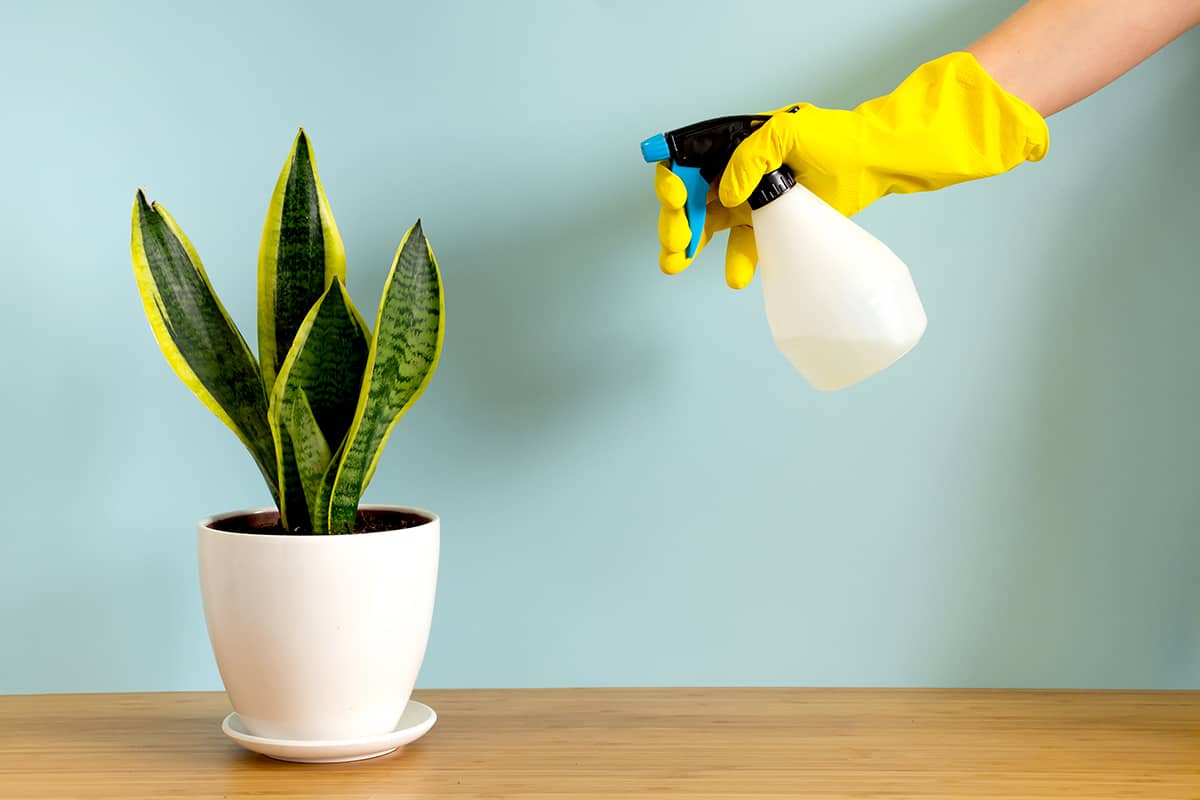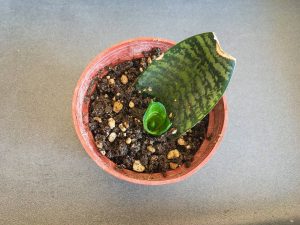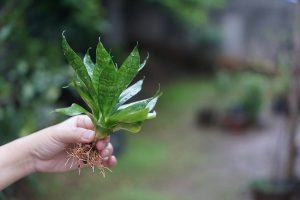Snake plants are notoriously low-maintenance plants, and as a type of succulent, they are able to withstand periods of drought. Striking a good balance is necessary when it comes to watering a snake plant because while they will not tolerate overwatering, they also cannot go for too long without any moisture.
A snake plant will tell you it needs water by displaying symptoms such as browning leaves, but you can figure out if your plant needs water before this happens by checking the condition of the soil. Check out these tips to make sure you bring your best watering game to your snake plant.
Table of Contents
What are Snake Plants Water Requirements?
Snake plants are incredibly easy to care for, and they are very forgiving when it comes to sporadic or inconsistent watering habits; however, if you get their watering needs completely wrong, then this can cause the death of the plant. Snake plants prefer to be kept in soil that is moist, not wet.
They can survive short periods of drought, but this can cause stress on the plant so it isn’t advisable. On the other hand, too much watering will lead to root rot and the demise of the snake plant.
The best type of water care for a snake plant is one which thoroughly moistens the soil and then allows for the soil to almost entirely dry out before watering again and repeating the process.
Can Snake Plants Get Dehydrated?
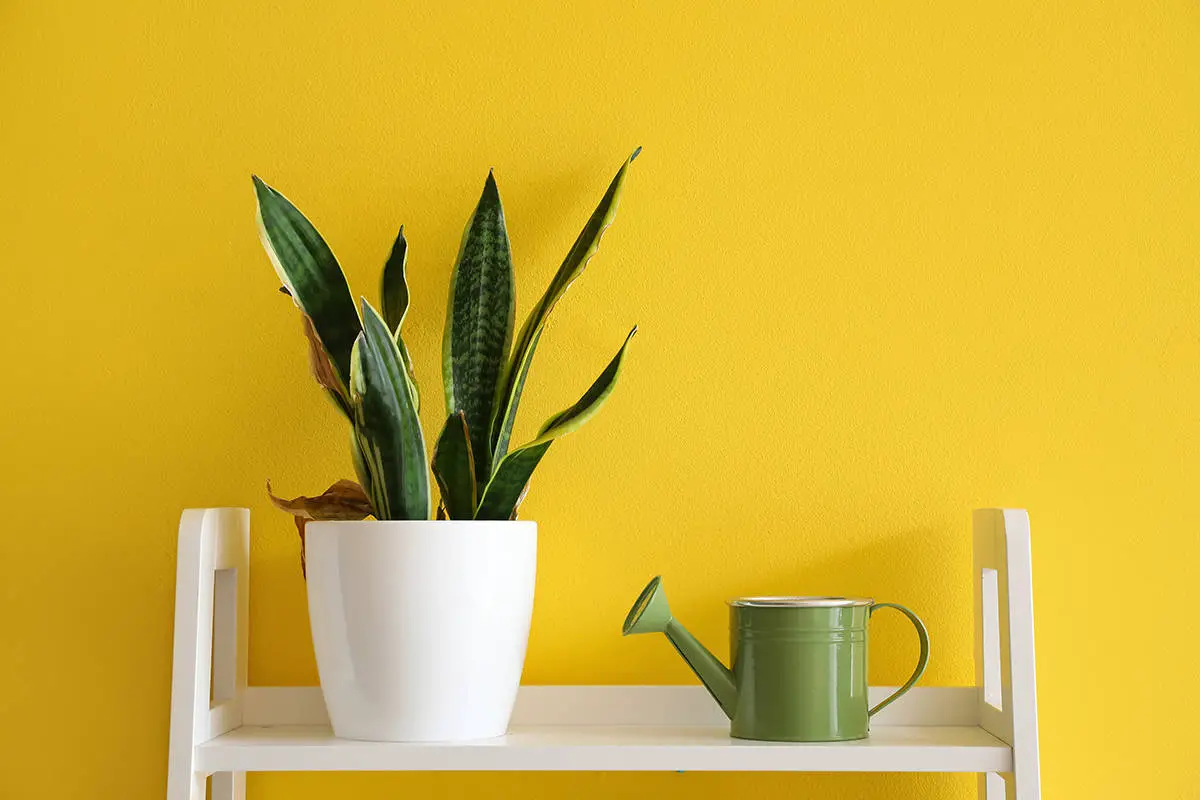
Yes, despite the fact that these plants are succulents, they can become dehydrated if you go too long without watering them. They store moisture in their thick, fleshy leaves, and when they find themselves in dry soil where their roots cannot access water, they will instead use their own sources of water to stay alive.
The result of this is that a snake plant will be able to survive for some time in completely dry soil without being watered, but this will take a toll on the health of the plant.
Signs of Dehydration in Snake Plants
The most common sign of dehydration in snake plants is the tips of the foliage turning brown. This happens because when a snake plant does not have access to water at the root level, it will use its own reserves of moisture stored in the leaves, starting with the tips.
As the moisture from the leaves gets used by the plant, the brown of the tip will start to spread throughout the whole leaf. Severely dehydrated snake plants will have brown leaves with a crispy or wrinkled texture, and they will start to curl at the ends.
How to Repair Dehydrated Snake Plant
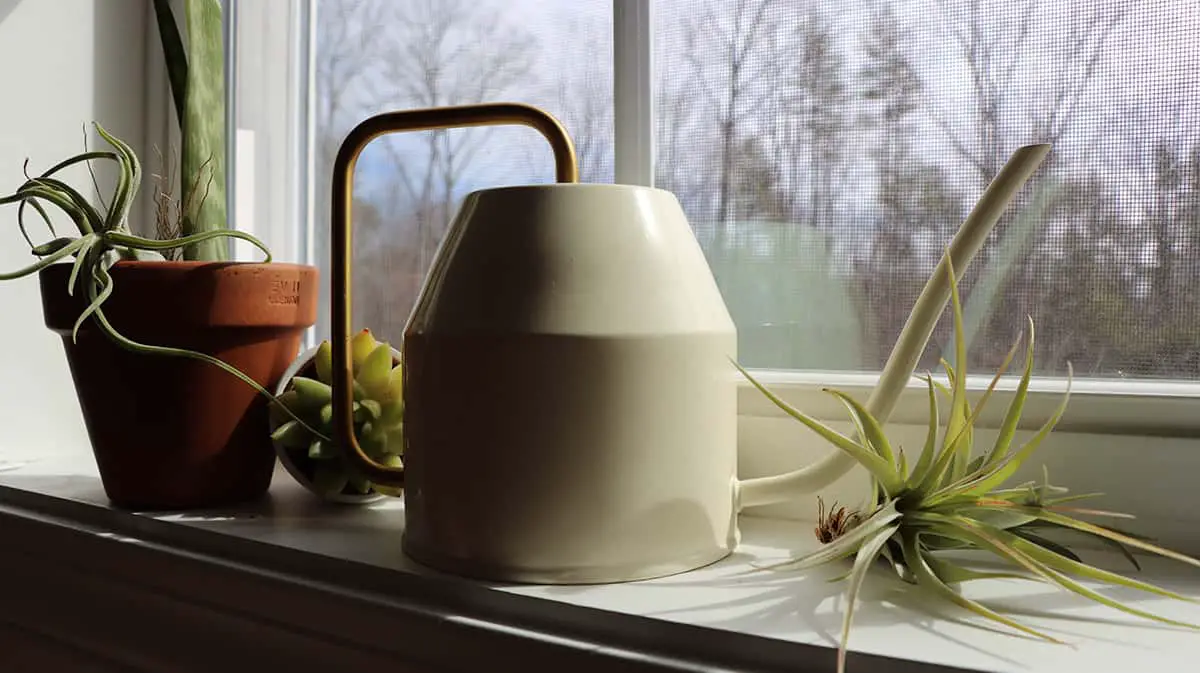
The extent of dehydration in your snake plant will affect which course of action you proceed with.
If just the tips of the foliage are brown and starting to curl, then the plant can be saved. Thoroughly water the plant until water emerges from the bottom drainage holes, and then immerse the plant in a shallow bowl of water for 20 minutes so that it can absorb any additional water up through the planters drainage holes.
If more than half of a leaf has turned brown, you should prune the leaf to a point where it is still green or remove the leaf entirely. Deeply water the plant as above, and proceed with a more regular watering schedule.
If the majority of the plant’s leaves are so dehydrated that they are entirely brown, the plant may be beyond repair. In this case, remove all of the brown leaves, deeply water the plant, and hopefully, some new pups will emerge to help the plant regenerate.
Can Snake Plants be Overwatered?
Yes, snake plants can be overwatered, and this is actually the leading cause of snake plants dying. When a snake plant is overwatered, the soil becomes waterlogged, which doesn’t allow for air to circulate around the roots.
The moist and compacted soil will encourage the development of fungi and mold, which can cause root rot to set in. Root rot is a condition that commonly affects overwatered plants.
The roots rot to the point that they are no longer able to serve their purpose of delivering nutrients and moisture to the plant, and therefore the plant will starve. Ironically, from this perspective, the act of overwatering the plant will actually cause it to die of thirst.
Signs of Too Much Water in Snake Plants

Unfortunately, the signs that your snake plant has been getting too much to drink are much the same as the signs that it is dehydrated. This can make it difficult for inexperienced plant growers to understand where they are going wrong.
If your snake plant is suffering from brown tips or entirely brown leaves, then you should check the condition of the soil to see if it feels too wet or too dry. Another sign of overwatering is when mold starts to grow on the surface of the soil or if fungus gnats start appearing around your plant.
How to Repair Overwatered Snake Plant
As long as your snake plant hasn’t descended into complete root rot, you can fix the issue simply by letting the soil dry out. Remove any badly damaged leaves, and don’t water the plant again until the soil is dry all the way through.
Best Watering Technique for Snake Plants
Snake plants need to be watered thoroughly but infrequently so that the soil has a chance to dry out in between. This ensures their roots get adequate moisture to feed the plant, but not so much that the roots rot.
There is no set schedule for watering a snake plant because the frequency and amount of water you use will differ depending on the size of the plant, as well as the temperature it is growing in, and the type of lighting exposure it receives.
However, as a general rule, you can expect to be watering a snake plant approximately three times a month from May to September and then only once or twice a month from October to April.
Customize your watering schedule by always checking the condition of the soil before you proceed to add water. For most varieties of snake plants, the top few inches of the soil need to have completely dried out before you water it.
Check this by dipping your finger into the soil and feeling for moisture. Some snake plants, such as dwarf varieties like the Bird’s Nest Snake Plant, have even lower water needs and more delicate root systems.
For these, you should let the whole pot of soil dry out before adding more water. Test this by lifting up the plant and feeling the soil through the drainage holes in the bottom of the pot. If the soil is still moist, resist watering, and if it is dry, add water.
When watering, do so generously. Snake plants prefer heavy, infrequent watering rather than frequent light watering. Pour water onto the plant until it starts to seep out of the drainage holes at the bottom, and then stop.
This will ensure that all of the roots have been moistened by the water without supplying unnecessary excess moisture. Discard any water that has drained out of the drainage holes, and then begin the whole process again, checking for dry soil before watering.
